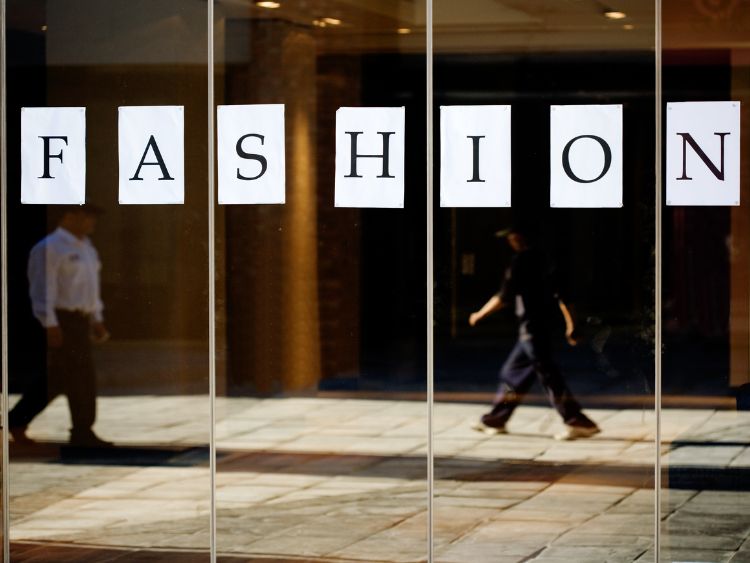Fashion brands are not mere labels sewed onto clothes they are a declaration of culture, identity, and aspiration. From classic luxury brands to emerging indie designers, the idea of a fashion label has grown into a potent factor that influences the fashions of the moment and affects the way people behave. What can make a fashion brand stand out? And what is it that makes these brands so appealing to viewers across the globe?
The Essence of a Fashion Brand
At its heart the concept of a fashion label is more than clothes. It’s the lifestyle, a dream and a commitment to its customers. Brands such as Chanel or Gucci have developed how to create a connection with their customers. When someone buys a product from these brands, they aren’t simply buying a clothing item or accessory. They invest in an item tradition, craftsmanship and a sense of prestige.
The emotional connection distinguishes a reputable fashion brand from other clothing brands. It’s the story behind the brand as well as the values it promotes and the experiences it provides. For instance the sustainable fashion brands such as Patagonia as well as Stella McCartney have established their reputations by promoting ethical practices as well as environmental responsibility. Their commitment to sustainability is a distinctive selling points that appeals to today’s eco-conscious buyers.
The Role of Branding in Fashion
The branding process is at the center of every fashion company that is successful. It includes every aspect from branding design to packaging to marketing strategies as well as customer experience. A well-designed brand identity doesn’t just help differentiate one brand from the other but also helps build trust and loyalty.
Take a look at Nike’s famous swoosh and Louis Vuitton’s Monogram. These instantly recognizable and create strong connections with innovation and quality. A successful branding strategy also requires the sameness across all channels whether it’s a shop’s interior design or social media presence and customer support.
Additionally, storytelling plays a crucial part in the branding process. Brands who weave compelling stories about their roots, values and mission are more likely to resonate with their customers at an emotional level. For example Ralph Lauren’s depiction that depicts his vision of the American Dream or Dior’s romantic style tells stories that transcend fashion and enthrall customers.
The Influence of Fashion Brands on Culture
Fashion brands don’t simply follow trends; they define the trends. In the past, iconic brands have played a crucial part in shaping the culture. Take Chanel’s small black dress changed the way women dressed or how Levi’s jeans were an emblem of rebellion in the 1960s.
Fashion brands are continuing to influence the culture of today through campaigns, collaborations or runway fashion shows. The most prominent partnerships, such as Adidas x Gucci or Balenciaga x Crocs blur the line between streetwear and luxury and challenge traditional ideas of fashion. These partnerships also create buzz and help brands stay relevant in a constantly changing market.
Social media has boosted this influence on culture, offering companies the opportunity to connect with millions of people instantly. Platforms such as Instagram and TikTok have become the most important arenas for visibility of brands with celebrities and influencers being a key factor in expanding their impact. A single viral post can propel a brand to worldwide recognition, as is evident in the popularity of Off-White and its founder, Virgil Abloh.
The Challenges of Building a Fashion Brand
The appeal of having an established fashion brand is unquestionable but the road to success is filled with obstacles. Fashion is highly competitive, with many brands competing for consumers’ interest. To be noticed, brands need to continuously innovate and adjust to the changing demands of the market.
One of the biggest issues currently is sustainability. With increasing awareness of the impact on the environment of fashion and fast fashion, consumers are demanding more visibility and responsibility from the brands they purchase. This has forced many companies to review their production methods as well as their materials and business models.
Another issue is keeping authenticity in the age of heightened connectivity. People are more educated than ever before and are able to detect fakery. Companies that don’t deliver to their commitments or commit untruthful practices are at risk of losing credibility and the trust of their customers.
The Future of Fashion Brands
As the fashion world is constantly changing and evolve, brands need to embrace change and adaptability to stay ahead. Technology, for instance has been playing a major role in the fashion industry. With everything from fashion show virtualization to AI driven personalized and more, brands are making use of digital tools to improve customer experience and simplify processes.
Sustainability will remain an important consideration. As consumers seek more environmentally friendly products, companies will need to focus on circular fashion practices like recycling, upcycling, or the reduction of the waste. New technologies such as biofabrication and 3D printing offer a lot of potential to produce eco-friendly and sustainable products.
In addition the rise of direct-to-consumer (DTC) brand names is changing conventional retail model. By avoiding the intermediaries, and instead selling direct to buyers, companies such as Everlane and Glossier can offer top-quality goods at affordable costs while establishing closer connections with their customers.
Conclusion
Fashion brands are more than a company It’s a phenomenon of culture that represents the values of society aspirations, aspirations, and creative. It doesn’t matter if it’s rooted in luxury sustainability, or even innovation top brands have those that create significant connections with their consumers. While the fashion industry continues to develop, one thing is evident: the strength of a fashion label is its ability to influence, inspire, and last.
Authoritative Links
www.vogue.com www.businessoffashion.com www.highsnobiety.com

